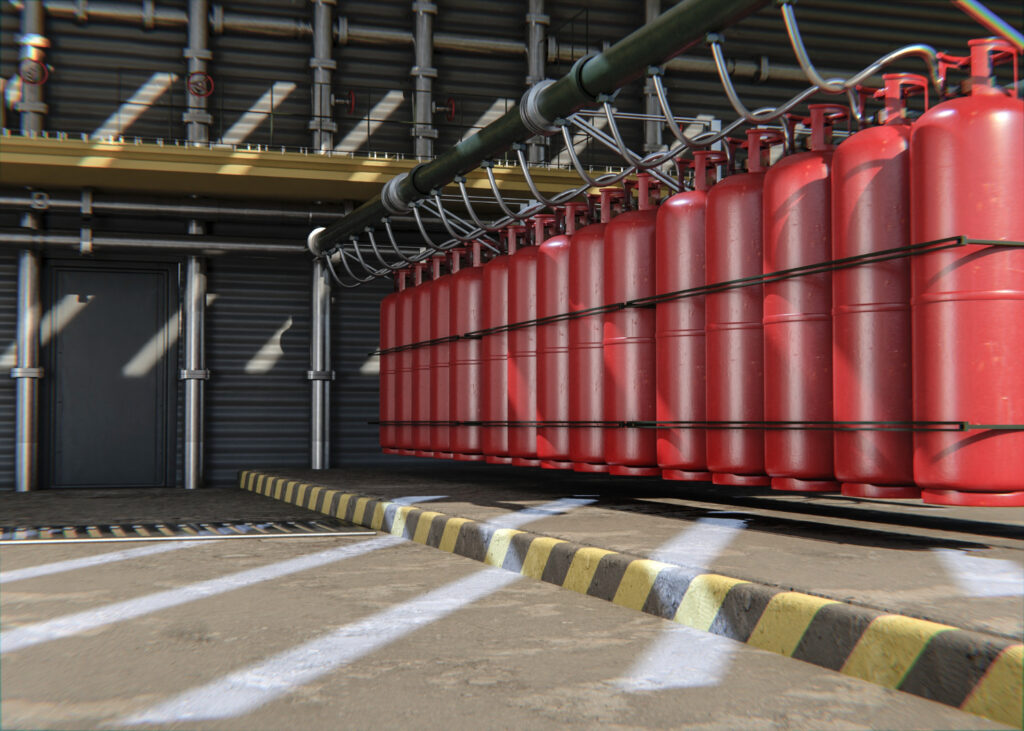Special Hazard Suppression Systems: Different types of solutions for different types of fire hazards

Not all fires are created equal, and neither are fire suppression systems. Without diminishing their effectiveness, traditional water sprinkler systems might not be suitable for all types of fire hazards, as these can cause significant water damage to sensitive equipment and electronics. In situations like this, special hazard suppression systems can become a better option in offering targeted protection for specific fire risks.
Why Consider Special Hazard Suppression Systems?
Regular sprinkler systems might not be the best choice for all environments. Special hazard systems offer additional benefits such as:
- Faster Detection: Thanks to advanced technology, these systems can identify fires in their early stages, minimizing the potential damage.
- Targeted Suppression: These systems can be designed to use specialized agents targeted to extinguish fires without harming valuable equipment or leaving corrosive residue.
- Business Continuity: By minimizing water damage, some of these systems reduce the post-hazard cleaning time allowing businesses to get back to normal operations quicker.
Understanding the different types of Special Hazard Suppression solutions:
There’s no one-size-fits-all solution in fire protection. Different special hazard systems use various suppression agents, each suited to tackle specific types of fire:
- Clean Agents: These gaseous agents like Inergen or FM-200 are ideal for computer rooms and server centers. They extinguish fires by displacing oxygen, leaving no residue.
- Inert Gases: Inert gas like Nitrogen floods an area, diluting oxygen and stopping combustion. They’re suitable for archives and libraries where water damage is a major concern.
- CO2: Carbon Dioxide extinguishes fires by smothering them. While effective, CO2 displacement can be dangerous to occupants if not properly designed and installed.
- Water Mist: A fine water spray with minimal water damage, this is a good option for areas with flammable liquids like processing plants.
- Dry Chemical: Familiar red powder extinguishers use a similar agent. Dry chemical powder is effective on flammable liquids and electrical fires but can leave a residue requiring cleanup.
- Foam: For flammable liquid fires, foam blankets the burning material, preventing oxygen contact and extinguishing the flames. This is commonly used in industrial settings.
Finding the Right Fit:
Selecting the most suitable special hazard system requires careful consideration of several factors:
- The type of hazard: What kind of fire is most likely to happen (electrical, flammable liquids, etc.)?
- The protected area: What are the valuable assets you need to safeguard?
- Occupancy safety: How will the suppression agent affect people in the area?
Invest in Peace of Mind
Special hazard suppression systems are an investment in protecting your critical assets and business continuity. By understanding the different types and their applications, you can ensure your property has the best defense against fire’s devastating effects.
Call the FireMaster today! Our team of qualified fire protection professionals is ready to assess your business fire suppression needs and ensure you get the right system installed, inspected, and maintained for optimal effectiveness.
Remember, a proactive approach to fire safety is essential to safeguarding your valuables and ensuring everyone’s safety.
